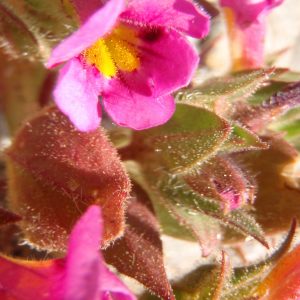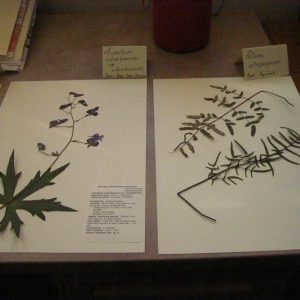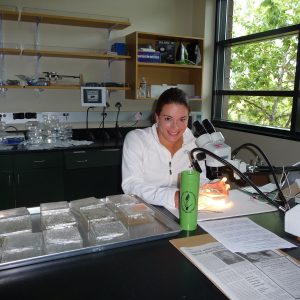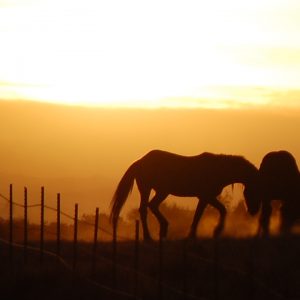This is the end of my fourth week in the Mojave Desert, the heart of which (along with me) resides in Needles, CA. So far, this botany/SOS intern has been helping her coworkers survey Mojave Fringe-Toed Lizard habitat, building fence, scouting for potential seed collection sites, studying Unusual Plant Assemblages, and alwaysalwaysalways learning new flora. Living in the desert, especially during a dry year, teaches you to appreciate the little things. Like flowers that are 3mm wide. Forget a hand lens, I need a telescope to identify some of these itty bitty plants.
- At Work with the Rancho Santa Ana Interns
Looking out at the desert landscape, it’s easy to assume that there’s nothing alive—but I’m learning that this is not the case. The plants that can survive this harsh ecological niche have earned my respect, and I love coming across even the teeniest flower unexpectedly.
Aside from work, my cointerns and I live right next to the Colorado, which is a fun escape from the heat. I’ve been having a great time exploring the surrounding states, parks, and the Mojave National Preserve, which is in the middle of our field office. I’m excited for the new plants I’ll be finding the next couple of months, and for a great field season.
Lara Kobelt
Needles, CA BLM



























